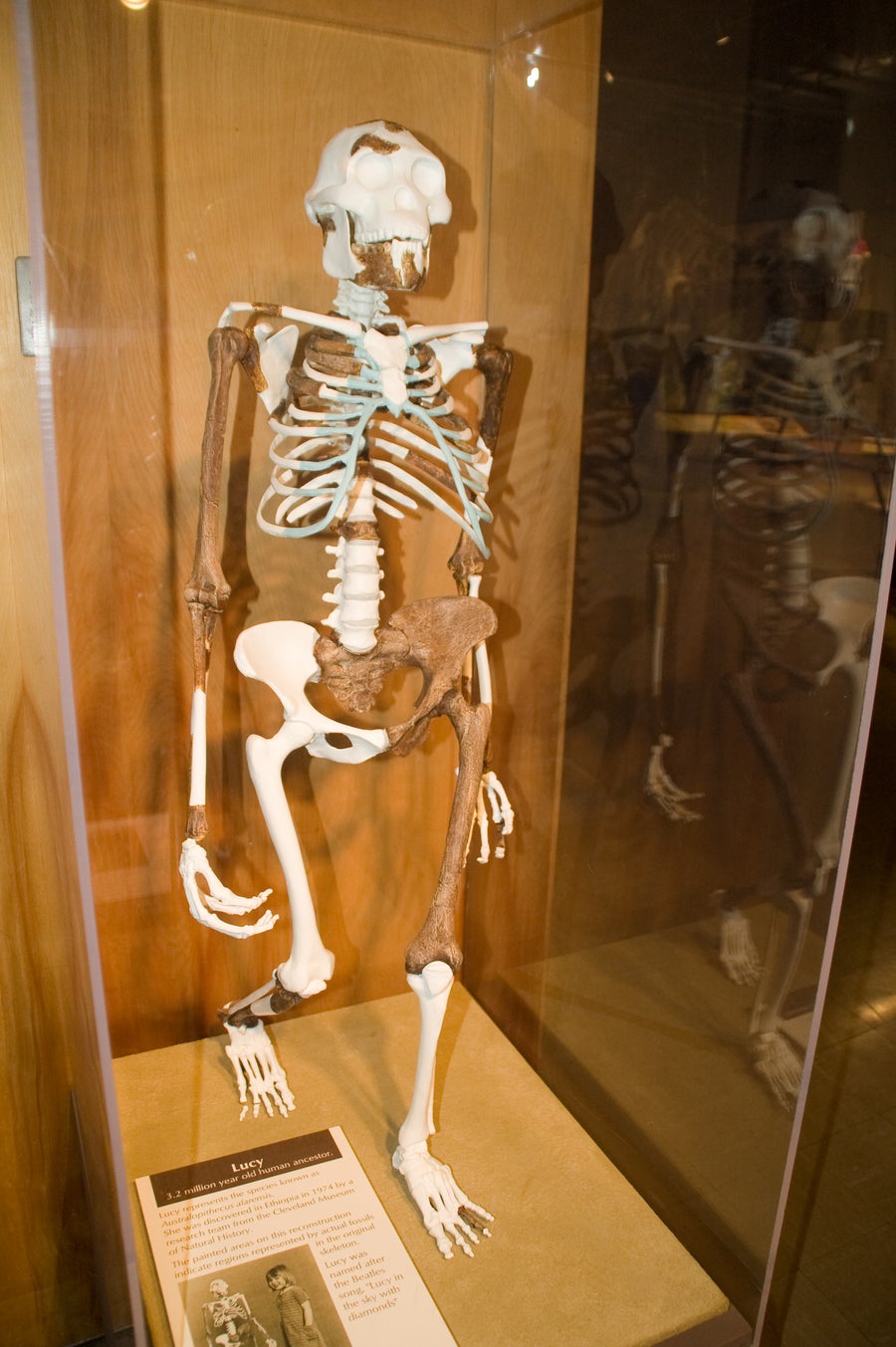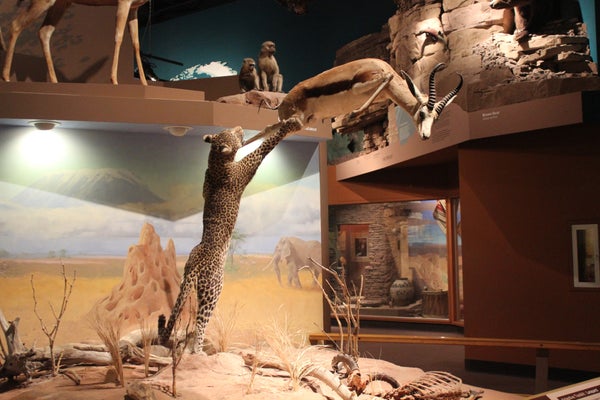This article was published in Scientific American’s former blog network and reflects the views of the author, not necessarily those of Scientific American
Good museum experiences don’t just happen. It may feel that way to the people walking through, but many hundreds of hours and many hands have come together to make it feel that way. And as important as I believe museums are, I don’t think that I would have given much thought to the work that goes into making a great museum if I hadn’t visited some that ended up feeling not so great.
I grew up visiting the Cleveland Museum of Natural History. From the Foucault pendulum in the lobby to the floating Dunkleosteus terrelli in the back, I can still close my eyes and mentally walk most of the way through. Likewise, my husband can tell you all about the greatest hits of the Pennsylvania State Museum (hint, it involves a rather gruesome mural of the Civil War the size of a room). So you can understand how excited the two of us were about the local museum night the first year we were living in Switzerland. One night when dozens of museums could be accessed with a single ticket! We were so pumped that we made ourselves a map and a schedule.
A few of the museums were all housed in the same building, so it seemed like a logical place to start the night. First up: the natural history museum. Now I recognize that the hall of life in Cleveland’s museum set some expectations. The one wolf was so realistic, prowling over the walkway, that elementary school kids would dare each other to go past in packs. Harrisburg had a similar display, with a huge buffalo and hall of life-like birds. This museum was not like that at all. Specimens – because that is really the best word for them – filled harshly lit shelves in long, industrial, glass-fronted cases. Many of the specimens looked impaled on their mounts, their large, black stitches still visible. It looked like a warehouse where someone carefully stowed their spare inventory of dead animals.
On supporting science journalism
If you're enjoying this article, consider supporting our award-winning journalism by subscribing. By purchasing a subscription you are helping to ensure the future of impactful stories about the discoveries and ideas shaping our world today.
Once the initial shock wore off, I noticed the placards and related information. There was a lot to learn, if one were motivated. But the experience felt closer to walking through a textbook than a museum exhibit. I can’t even remember the name of a single animal I read about. Having grown up with the immersive and display-centric style of American natural history museums, I had trouble connecting with what was on the other side of the glass.
Arguments can be made about the overall goal of such museums – whether to breed curiosity or convey facts – but that is for a longer discussion of informal education on another day. And until a few days ago I would have said the main difference between the museums was the sense of wonder that comes from seeing Happy (the Haplocanthosaurus delfsi) dwarf not just you and your parents, but everything else in the room. But a recent conversation revealed that the Cleveland Museum of Natural History left more than a sense of wonder in my brain.
In a conversation with a colleague about whether the fossils in museums are the originals or replicas, I ended up mentioning Lucy. He looked blank. “Lucy,” I said. “You know, Lucy! One of the skeletons of a human ancestor that they know walked upright? She’s like this big?” I held my hand out just below my hips. “Discovered in Ethiopia in the ‘70s? Named for the Beatles song ‘Lucy in the Sky with Diamonds’?” My colleague still looked blank. I concluded that he must have been sick from science class that day. Of course everyone knew about Lucy.
At home I asked my husband if he knew about Lucy, even mentioning that it had something to do with fossils. He lit up and said that, yes, he knew about Lucy. That was the name of the T-Rex skeleton, right? No. That was Sue. I was about to chalk it up to my geology degree when one of the images on Lucy’s Wikipedia page set me straight. The picture shows Lucy standing in the display case in Cleveland accompanied by the following sign:

Text: “Lucy. 3.2 million year old human ancestor. Lucy represents the species known as Australopithecus afarensis. She was discovered in Ethiopia in 1974 by a research team from the Cleveland Museum of Natural History … Lucy was named after the Beatles song, “Lucy in the Sky with Diamonds.”
Credit: Andrew Bardwell Flickr (CC BY-SA 2.0)
Though it may not have been one of the museum’s flashiest displays, it certainly left its mark. So while the immersive and sometimes awe-inspiring exhibits were what pulled me in, the glass cases and plain placards clearly had their role to play. Perhaps it wasn’t just the museum, but that as a kid the Cleveland Museum of Natural History felt like my museum. Our museum. My parents, cousins, teachers, and friends all had the same memories. And we kept going back. So all the work that the curators and exhibit designers do creates a place a kid can feel like is their own. I may not live in northeast Ohio anymore, but just as much as the Cleveland sports teams will always be my teams, the Cleveland Museum of Natural History will probably always be my museum.
